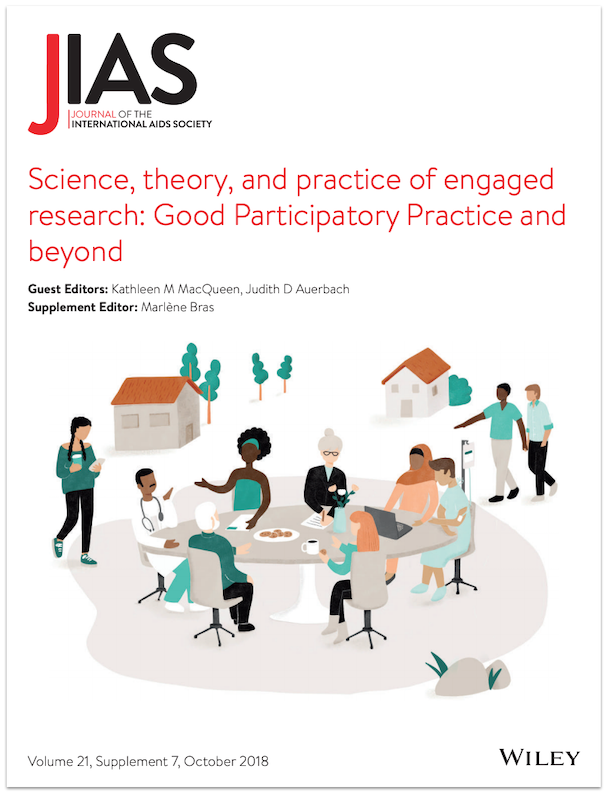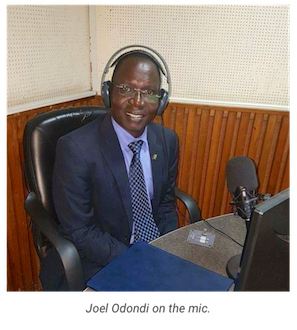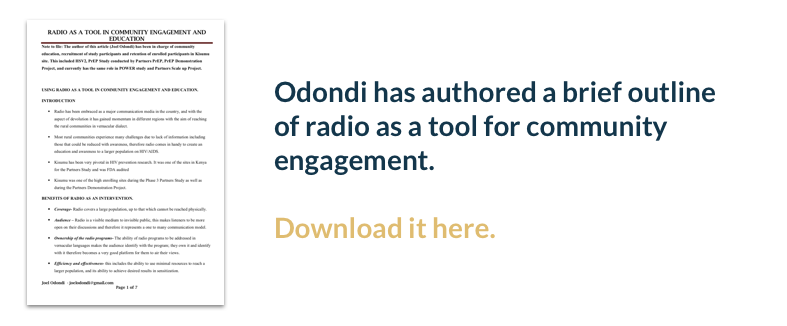Greetings from Madrid! Some meetings are a series of presentations, coffee breaks and cocktails. Others are these things plus something else—a sense of movement towards a consensus, a new commitment. As this HIV R4P conference enters its final day, we feel like it’s safe to say that this conference heralded an energized, nuanced commitment to choice.
In This Update:
- Young women should run the world and if they did, there would be choices and much less shame about bodies and their coverings.
- People really do want different things; use can influence preference.
- Injectables have promise, based on user preferences and trial data, but also real-world challenges, including “the tail.”
- The choice of a vaccine in the future is key—and possible, provided funding remains.
- Choice has many champions—including activist scientists!
- Biomedical tools must live in programs that address structural issues
- We all need to choose our words carefully, and take actions to match
As it happens, AVAC highlighted choice in our annual report, No Prevention No End, released last week ahead of the conference. We noted how politicized the world has become, and how essential it is to reclaim it in speech and more importantly in actions. HIV R4P did this in extraordinary ways. Here are a few takeaways and the sessions that brought this home:
Young women should run the world and if they did, there would be choices and much less shame about bodies and their coverings.
Throughout the conference, the Advocates Corner has been the site of vibrant, spirited engagement, much of it led by young African women attending the conference from Uganda, Tanzania, Malawi, South Africa and many other countries. Over the course of the week, they’ve engaged with researchers, challenged the audience in a powerful opening action, and articulated their needs and desires in creative ways. This included a “panty line”—a powerful, visual uncovering of the hopes, priorities and demands that women are supposed to keep hidden—like our desires. The hotel’s demand that fabric panties be removed from the line, conveyed by the conference staff, prompted strong feelings and swift action. In the closing plenary, these young women took to the stage with signs, panties and pride, to great applause and a strong statement of support from the Conference chairs.
People really do want different things; use can influence preference.
In a Tuesday session called If I Choose, Will I Use, researchers from the Quatro study and from a collaborative between RTI International and the Desmond Tutu HIV Foundation (DTHF) in Cape Town presented results from two different inquiries into what people who may someday use products want in those products. This seemingly logical step is not always taken in the context of HIV prevention—or product development writ large—so products don’t always match people’s preferences. In the next era of choice, if these presentations are any indication, they will. Here are some highlights:
- As Elizabeth Montgomery (RTI International) explained (QA05.04), Quatro was designed to assess the acceptability, preferences, user experience and effect on sexual behavior of four different vaginal microbicide or multi-purpose technology (MPT) delivery forms, using placebo products in roughly 200 18- to 30-year-old African women. All of the women got to use four products: rapidly disintegrating vaginal insert, intravaginal ring (IVR), film and gel. In the first four months of the study, women were asked to use each of the four products in turn either once a week (for the insert, film and gel) or for a month (the ring). They were then asked to choose one preferred product to use as directed for the final month. The study found that preferences varied before and after use and by country—that there was no dominant favorite. Importantly, given the potential regulatory opinion on the dapivirine ring, the ring’s popularity increased the most—it was also the most “polarized” option, insofar as women either really liked it, or did not.
- Quatro tested formulations of real-world products; the DTHF-RTI study (QA05.05) took on preferences at an even earlier stage, involving about 600 young South African men and women in a project that asked them to choose between hypothetical products with a range of qualities, or attributes, including duration of protection, site where the product would be delivered, mode of delivery and pain or discomfort associated with use. As Alexandra Minnis (RTI International) explained, the project was set up in such a way that people could weigh the importance of different qualities in different combinations. Again, there was evidence that people weigh trade-offs: the people in the study prioritized long-acting products with low levels of discomfort associated with use, and favored injections over implants. But every quality or attribute of the product impacted decisions.
- A presentation of qualitative research from the Ring Study (QA05.02) was a reminder of how much can be learned from efficacy trials besides whether a product works or not. Cecilia Mitford (MatCH Research Unit, University of Witwatersrand, South Africa) explained the different factors influencing women’s use of the ring, based on in-depth interviews with trial participants across the study’s six research centers. Factors influencing use included ring efficacy and partner perceptions.
Injectables have promise, based on user preferences and trial data, but also real-world challenges, including “the tail.”
- A leading next generation PrEP product candidate is an injectable formulation of cabotegravir given every eight weeks via an injection in the buttocks. Betsy Tolley (FHI 360) presented data on the acceptability of this approach gleaned from trial participants in HPTN 077—who by and large reported that the injections were acceptable—with embrace of the method increasing from the beginning to the end of the study. That’s the good news…
- …a cautionary note, also from HPTN 077, was delivered by Raphy Landovitz (UCLA Center for AIDS Research and Education) who presented on the duration of drug , after the last injection in the bodies of a subset of 177 people from the trial. By 18 months after final injection, 87 percent of the men (n=60) were below the limit of quantitation (25nanongrams/ml), while 13 percent still had detectable levels of drug in the blood. In women (n=117), 58 percent were undetectable at 18 months; 42 percent of women still had detectable CAB. Sex was an important predictor of the half-life of the product; in this analysis, the half-life of the drug was 45 percent longer in women (all of whom were cis-gender) than men (ditto). BMI was also an independent predictor. The drug that’s left in the body after a final injection is known as “the tail”—and the tail matters because at some point, the drug is still in the body but not at a level that will protect against HIV. When this happens, people are at risk of both HIV and drug resistance. So injectable use will likely require a period of oral PrEP use for anyone who wishes to stop. How long would you need to be on daily oral PrEP to cover the tail? Landovitz calculated that the median time for each sex group to fall below the limit of quantitation—undetectable—for male was 42.7wks (20-134wks) and females, 66.3wks (18-182wks). Trial participants in ongoing efficacy trials of CAB-LA PrEP receive 48 weeks of oral PrEP after discontinuation. These data suggest that this might need to be revisited.
- This same drug is being evaluated, in combination with another ARV, rilpivirine, for antiretroviral treatment. In It Only Hurts a Little Bit satellite session (SA13), Santiago Moreno reported, in moving terms, the transformative impact that injectable ART had on young people who said that, for the weeks between injections, they forgot they were ill, or felt truly healthy for the first time. Around the world, young people are less likely to be virologically suppressed and linked to treatment, so their preferences and experiences are of profound importance. Panelists noted a coming conundrum: injectable ART is only being considered for people who have taken oral ART and achieved virologic suppression for six months, yet the people who may need it the most may not be able to meet these criteria.
The choice of a vaccine in the future is key—and possible, provided funding remains.
While the field awaits results in 2021 or so from the two efficacy vaccine trials in the field, R4P included a number of presentations on experimental vaccine approaches to creating broadly neutralizing antibodies (bNAbs). The goal of this work is to develop products that teach the human immune system to create antibodies like those being given, in pre-made form, to participants in passive immunization studies, such as the AMP trial.
There are three approaches being considered for early human trials from data now mostly in mice:
- Lineage based vaccine design, or basically retracing the steps a known bNAb has taken to become a bNAb.
- Germline targeting vaccine design, which finds the scarce “precursor” B-cells that later could become bNAbs and stimulating them to become protective.
- Immune-focusing vaccine design which focuses all immune responses on one key part of the virus like the fusion peptide at the base of the HIV spike or the V1/2 loop linked to the immune response in RV144. Immune-focusing attempts to get around the problem that the immune system often prefers to create off-target non-protective antibodies. All of these approaches are considering new immunogens like the SOSIP trimer which is designed to look as much like the HIV spike as possible to spur greater immune responses.
On the heels of the Resource Tracking Working Group report presented at the conference declining resources for HIV vaccine research, Robin Shattock (Imperial College London) and his colleagues presented on research from the 5-year €23 million EAVI2020 project. Working with a modest budget in the HIV vaccine world, EAVI2020 plans to design, test and manufacture multiple vaccine candidates, a model perhaps for more financially constrained times.
Finally, so much is going on in vaccine research that Julie McElrath from HVTN noted we “drowning in a sea of data.”” The rise of bioinformatics has highlighted the need coordinate across networks to make data useable. Uniform assays and ultimately common criteria for down selection for clinical trials for efficacy trials are needed to conserve resources and ensure the most promising candidates move forward.
Choice has many champions—including activist scientists!
In Wednesday’s plenary presentation, Raphy Landovitz and Craig Hendrix (Johns Hopkins University) embodied activist principles of naming issues and calling on specific actors to respond to concerns. Hendrix used a toolbox metaphor to take the audience through a “thought experiment” about what they’d like to have in their bedside drawer for a safe sexual life. Did people want the equivalent of a handyperson’s special—drill, hammer, wrench, pliers and so on—or did they just want a hammer, in other words a single option. “Not everything,” Hendrix remarked, “is a nail.” The most important slide was his final one, in which he laid out core tasks for a range of stakeholders with power over the future of HIV prevention research. We find it so relevant and powerful that we have reproduced it here.
Biomedical tools must live in programs that address structural issues
In an oral abstract session (OA10) titled Key to the Response: Populations, Partners and Prevention, researchers reviewed a range of familiar and essential realities: marginalized populations carry a high HIV burden, need biomedical interventions and culturally competent care along with strengthened communities and changes in criminalization laws. Studies from Brazil, Indonesia, Kenya, South Africa, the Ukraine, the US, and Viet Nam all highlighted the degrees of violence by the state, families and societies that impact adolescent girls and young women, sex workers, transgender people, and drug users—as well as the resilience of these groups, and their essential role in designing and delivering solutions that fit into their lives.
We all need to choose our words carefully, and take actions to match
In our first update, we noted that both words and silences matter a great deal at this moment in history—in the world and in our field specifically. In that update, the quote attributed to Dr. Mike Cohen regarding PrEP in women did not include the full text as presented on the slide, which stated, “Concerns about potential limitations of TDF/FTC prevention in women have been noted, and will likely be clarified through ongoing studies (e.g. HPTN 082) and observational data.” We should have used the precise language from the slide, and we apologize for shortening the text as every individual should be heard in the words they choose.
The concerns AVAC has raised, including at length in our AVAC Report 2017: Mixed Messages and How to Untangle Them and at a range of consultations, about the ways that daily oral PrEP is described with respect to relevance for women remain. Daily oral PrEP is less forgiving in women; close to perfect adherence is likely required for protection. This is a limitation faced by many drugs that require diligent use for efficacy. We feel that it is essential that limitations related to PrEP for women be framed as problems to solve via innovative program designs, and that suggestions that a WHO-endorsed strategy may still be require research to validate its use in women can be misconstrued as reasons to delay expanded access. Cohen did not in any way suggest a delay, and we hope the full quotation clarifies this fully. However, AVAC’s advocacy partners have observed countries questioning PrEP’s utility in women and using similar framings to justify their reasoning.
We will cover the closing plenary session in more detail in our final update, and it will soon be available via webcast. It was a remarkable panel of leading researchers and advocates, including the conference co-chairs and Maureen Luba, a Malawi-based member of the AVAC team who works closely with MANET+ and CEDEP. While all the presentations were on different topics, there was a single unifying theme of collaboration, choice and voice. This is a field in which we must find ways to work together and to respectfully disagree. We look forward to working collaboratively and in community with all stakeholders dedicated to scaling up today’s tools and continuing investigation for new ones in the future.



